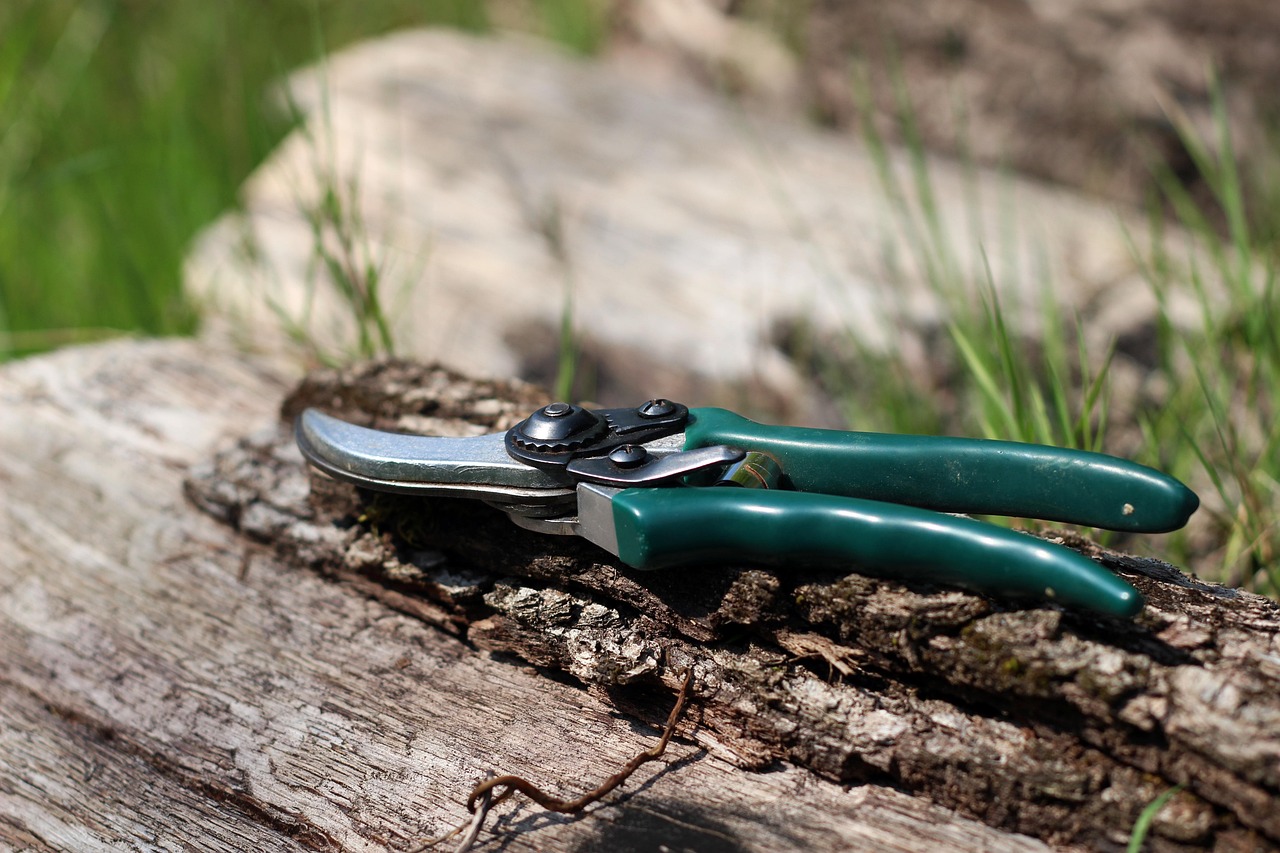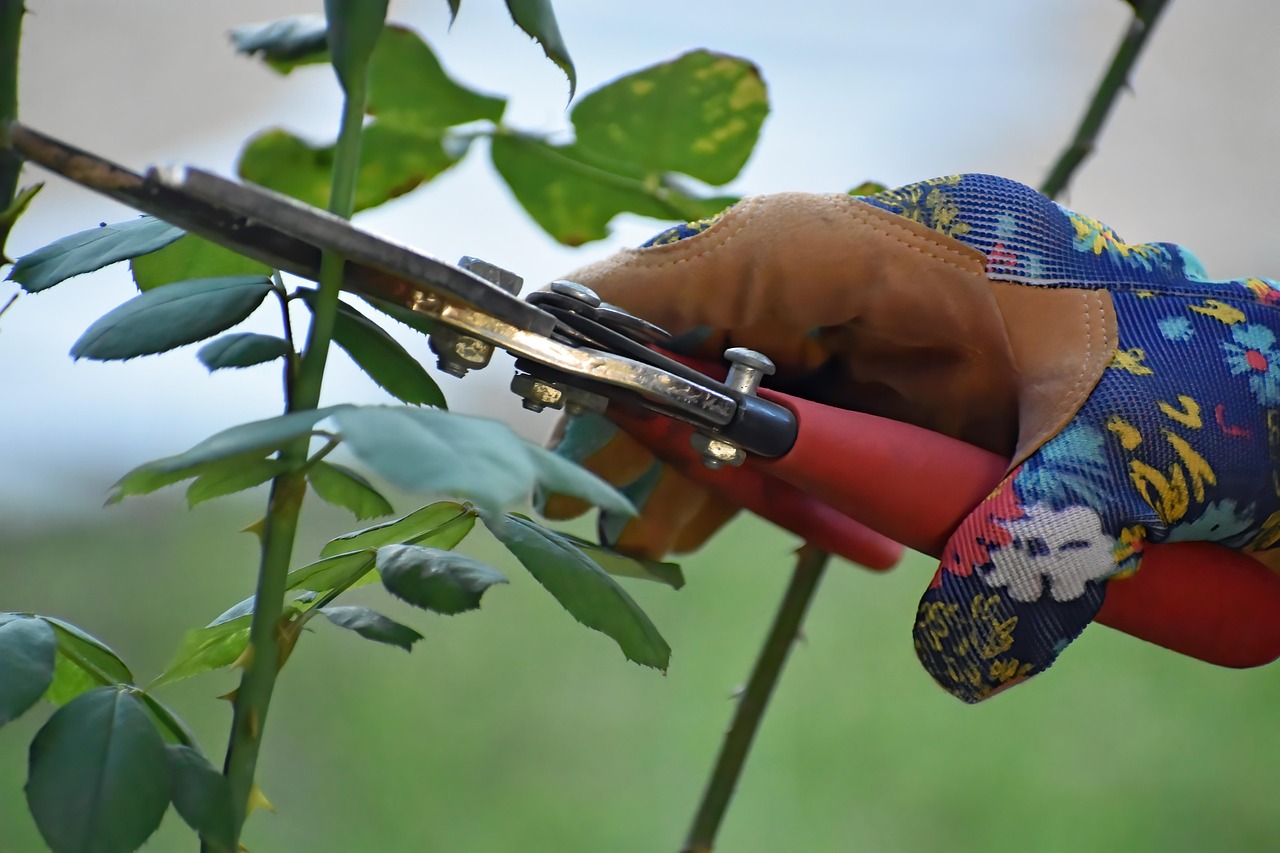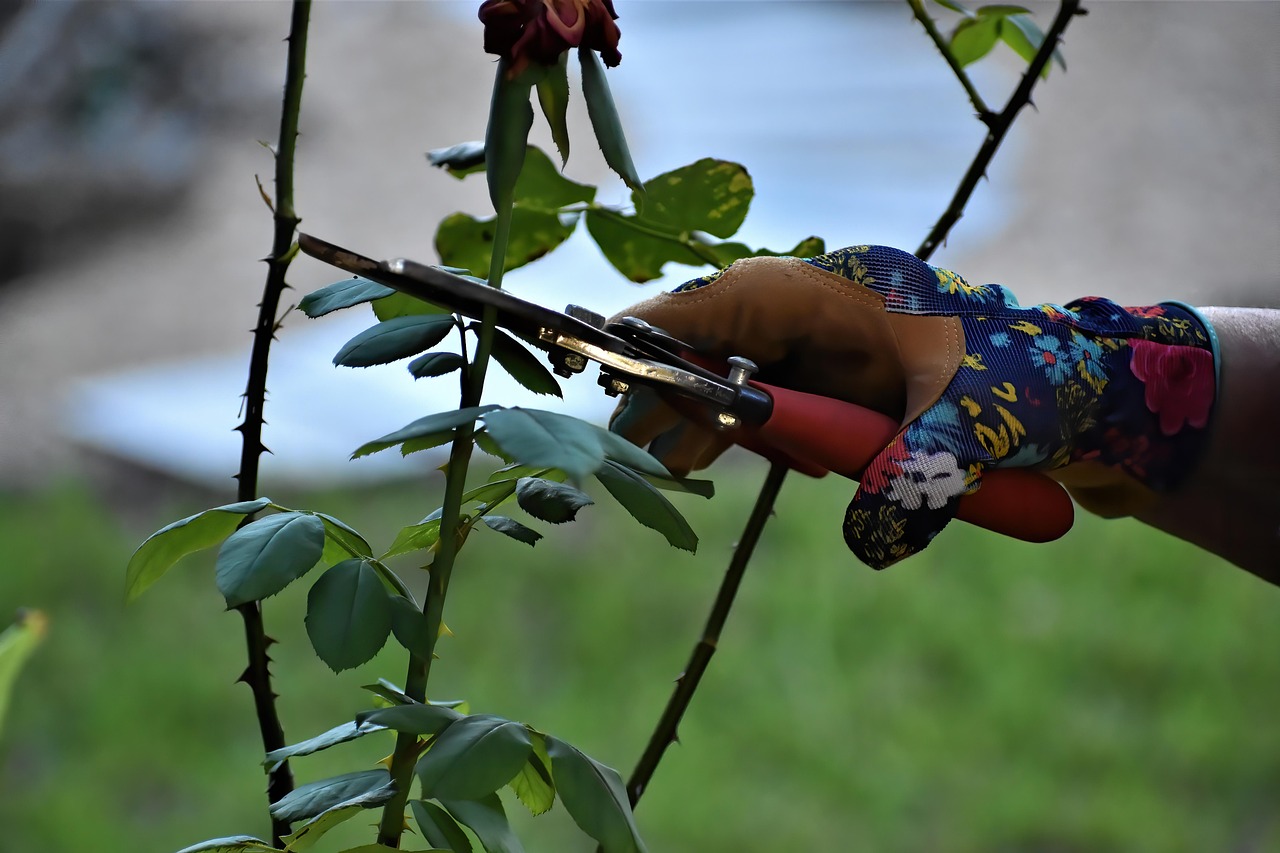Pruning roses is essential for encouraging summer blooms. By removing dead or diseased wood, shaping the plant, and promoting airflow, gardeners can stimulate new growth and enhance flowering potential. Proper timing and techniques are key to successful pruning.
Roses are celebrated for their exquisite beauty and delightful fragrance. They are a staple in many gardens, providing vibrant colors and textures. However, to maintain their health and maximize their blooming potential, regular pruning is necessary. Pruning not only helps in shaping the plants but also encourages robust growth and abundant flowers during the summer months.

Understanding when and how to prune roses can seem daunting for many gardeners. Each type of rose has specific needs, but some general guidelines apply across the board. Knowing the right tools and techniques will set you on the path to a flourishing rose garden. This article will explore the importance of pruning, recommended techniques, and timing to ensure your roses thrive in warmer weather.
The Importance of Pruning Roses
Pruning is an essential horticultural practice for several reasons:
- Encourages New Growth: Cutting back older stems stimulates the growth of new shoots, which produce flowers.
- Improves Airflow: Thinning out crowded branches allows for better air circulation, reducing the risk of diseases.
- Shapes the Plant: Regular pruning helps maintain a desirable shape and size for the rose bush.
- Removes Dead or Diseased Wood: This prevents pests and diseases from spreading to healthy parts of the plant.
Understanding these benefits can help gardeners appreciate the necessity of this practice. A well-pruned rose bush not only looks neater but also produces healthier blooms that can last longer throughout the summer season.

When to Prune Roses
Timing is crucial when it comes to pruning roses. Generally, the best time to prune is in early spring, just as new growth begins to show. This timing varies depending on your local climate. Here are some considerations:
| Climate Zone | Best Pruning Time |
|---|---|
| Cold Climates | Late March to Early April |
| Mild Climates | Mid to Late March |
| Tropical Climates | Year-round with minor adjustments |
In colder regions, waiting until the danger of frost has passed ensures that new growth is not damaged. In milder areas, early spring allows for a head start on blooming. In tropical climates, roses can be pruned throughout the year but may require seasonal adjustments based on rainfall and growth patterns.
Tools Needed for Pruning
Having the right tools is essential for effective pruning. Here are some basic tools every rose gardener should consider:

- Bypass Pruners: Ideal for making clean cuts on stems and branches.
- Loppers: Useful for thicker branches that cannot be handled by pruners.
- Hand Saw: For larger stems that require more power to cut through.
- Gloves: Protect your hands from thorns and other hazards.
- Disinfectant: Clean tools before and after use to prevent disease transmission.
Using clean, sharp tools ensures that cuts are smooth. This reduces stress on the plant and helps prevent disease. Investing in quality tools can make the pruning process more efficient and enjoyable.
Basic Pruning Techniques
Understanding basic pruning techniques is crucial for effective rose care. Here are some recommendations:
- Cut at an Angle: Make cuts at a 45-degree angle to promote water runoff and prevent rot.
- Cut Above a Leaf Node: This encourages new growth from that point.
- Aim for Open Center: Remove inward-growing branches to create an open center for better airflow.
- Remove Dead or Weak Stems: Focus on removing any stems that are dead, weak, or crossing each other.
By employing these techniques, gardeners can effectively manage their rose bushes. Healthy pruning practices lead to more vibrant blooms and a more resilient plant overall.

This foundational knowledge sets the stage for more advanced techniques and specific varieties of roses that may require tailored approaches. Understanding these basics prepares gardeners for a successful summer bloom season ahead.
Advanced Pruning Techniques for Specific Rose Varieties
While basic pruning techniques form the foundation of rose care, understanding the specific needs of different rose varieties can enhance blooming potential. Each type of rose, from hybrid teas to climbers, has unique characteristics that influence pruning methods. This section will discuss advanced techniques tailored to popular rose varieties.
Hybrid Tea Roses
Hybrid tea roses are known for their large, elegant blooms and long stems. Pruning these roses requires precision to promote healthy growth and abundant flowers.
- Timing: Prune hybrid teas in early spring when new growth begins.
- Cutting Back: Remove about one-third of the plant’s height. Focus on cutting back to an outward-facing bud to encourage growth outward.
- Thinning: Eliminate weak or crowded stems to improve air circulation. This helps prevent diseases.
By following these techniques, hybrid tea roses can flourish, producing beautiful blooms throughout the summer. Additionally, consider fertilizing after pruning to provide essential nutrients for new growth.
Floribunda Roses
Floribunda roses are celebrated for their clusters of flowers and hardiness. Pruning these roses focuses on shaping the bush while maintaining their fullness.
- Pruning Height: Cut back floribundas by about one-half to promote bushier growth.
- Removal of Old Wood: Identify and cut away older stems that have already produced flowers. This encourages new growth.
- Encouraging Clusters: Cut back lateral branches to about three buds to stimulate more flower clusters.
These practices will help floribunda roses produce an abundance of vibrant blooms, making them a favorite in many gardens.
Climbing Roses
Climbing roses require a different approach due to their growth habit. Proper pruning helps maintain their shape and encourages flourishing blooms along trellises or fences.
- Training: Secure the main stems to supports as they grow. Prune side shoots to encourage flowering on lateral branches.
- Removing Old Growth: Cut back older wood that is not producing blooms. This allows energy to be directed towards healthier stems.
- Timing: Prune climbing roses immediately after flowering if they bloom once per year, or in early spring if they bloom repeatedly.
Climbing roses can transform a garden landscape when pruned correctly, providing stunning vertical displays of color and fragrance.
Common Mistakes in Pruning Roses
Even experienced gardeners can make mistakes when pruning roses. Awareness of these common errors can help improve your rose care routine.
- Pruning Too Late: Delaying pruning can lead to damage from frost and reduced flowering potential.
- Over-Pruning: Removing too much of the plant can stress it and diminish blooms. Always leave enough healthy wood.
- Ineffective Tools: Using dull or dirty tools can lead to jagged cuts and disease transmission. Ensure tools are sharp and clean.
- Pushing Growth Too Early: Pruning too soon in spring can expose new growth to late frosts. Wait until the danger of frost has passed.
Avoiding these mistakes will result in healthier plants and more bountiful blooms, allowing your roses to thrive throughout the season.
Pest and Disease Management Post-Pruning
After pruning, it’s essential to monitor your roses for pests and diseases. Healthy pruning practices help reduce these risks, but vigilance is key.
Pest Control
A variety of pests can affect rose plants, including aphids, spider mites, and thrips. Here are some management strategies:
- Aphids: Use insecticidal soap or neem oil to control infestations.
- Spider Mites: Increase humidity around the plants, as they thrive in dry conditions. Consider using miticides if necessary.
- Thrips: Regularly inspect blooms and apply appropriate treatments if found.
Disease Prevention
Diseases such as black spot and powdery mildew can impact rose health. To minimize these risks:
- Maintain Airflow: Ensure proper spacing between plants to allow airflow, reducing humidity levels around leaves.
- Water Wisely: Water at the base of the plant rather than overhead to prevent fungal diseases.
- Regular Inspections: Inspect leaves regularly for signs of disease and remove any affected leaves immediately.
By being proactive about pest and disease control after pruning, you can ensure your roses continue to thrive and produce beautiful blooms throughout the summer months.
Fertilizing Roses After Pruning
After pruning, fertilization plays a crucial role in promoting healthy growth and vibrant blooms. Properly timed and balanced fertilizer applications can significantly enhance the recovery process and improve the overall health of your roses. This section will discuss the types of fertilizers suitable for roses and the best practices for application.
Types of Fertilizers
There are several types of fertilizers that can benefit rose plants:
- Granular Fertilizers: These slow-release fertilizers provide a steady supply of nutrients over time. They are easy to apply and help prevent nutrient leaching.
- Liquid Fertilizers: Quick-acting liquid fertilizers can be applied during the growing season to provide an immediate nutrient boost. They are particularly useful for correcting deficiencies.
- Organic Fertilizers: Compost, well-rotted manure, and other organic amendments improve soil structure and provide nutrients. They promote beneficial microbial activity in the soil.
- Specialized Rose Fertilizers: Formulated specifically for roses, these fertilizers typically contain balanced ratios of nitrogen, phosphorus, and potassium (NPK) tailored for flowering plants.
Best Practices for Fertilizing
Applying fertilizer correctly is essential for maximizing its effectiveness. Here are some best practices to follow:
- Timing: Fertilize roses immediately after pruning in early spring to support new growth. A second application can be made mid-summer during peak blooming.
- Amount: Follow package instructions for the recommended amount based on the size and age of your plants. Over-fertilizing can lead to excessive foliage growth at the expense of blooms.
- Application Method: Spread granular fertilizers evenly around the base of the plant, avoiding direct contact with stems. For liquid fertilizers, dilute as directed and apply directly to the soil.
- Watering: Water thoroughly after fertilization to help distribute nutrients and prevent root burn.
Watering Practices for Healthy Roses
Proper watering is crucial for maintaining healthy rose bushes. After pruning, establishing a consistent watering routine helps support recovery and encourages blooming.
Watering Frequency
The frequency of watering depends on various factors including climate, soil type, and plant size. Here are some guidelines:
- Soil Moisture: Check the top inch of soil; if it feels dry, it’s time to water.
- Frequency: Newly pruned roses typically require more frequent watering. Once established, watering may be reduced to once or twice a week.
- Morning Watering: Watering in the morning allows foliage to dry quickly, reducing the risk of fungal diseases.
Watering Techniques
Utilizing effective watering techniques is essential for rose health:
- Deep Watering: Water deeply rather than frequently to encourage deep root growth. Aim for at least one inch of water per week.
- Avoid Overhead Watering: Direct water at the base of the plant to minimize moisture on leaves, which can lead to disease.
- Drip Irrigation: Consider installing a drip irrigation system for consistent moisture without wetting foliage.
Mulching for Roses
Applying mulch around rose bushes has multiple benefits. It not only conserves moisture but also regulates soil temperature and suppresses weeds, which can compete for nutrients. This section will cover the types of mulch suitable for roses and how to apply it effectively.
Types of Mulch
Choosing the right mulch is vital for rose health. Here are some popular options:
- Bark Mulch: Provides a natural look and decomposes slowly, adding organic matter over time.
- Pine Needles: Excellent for acid-loving plants like roses, they help retain moisture while allowing drainage.
- Wood Chips: These break down gradually and can improve soil structure while suppressing weeds.
- Straw or Hay: These organic materials decompose quickly but may attract pests if not managed properly.
How to Apply Mulch
Applying mulch correctly enhances its effectiveness:
- Layer Thickness: Apply a layer of mulch about 2-4 inches thick around the base of each rose bush, keeping it away from direct contact with stems to prevent rot.
- Avoid Soil Compaction: Ensure that mulch is spread evenly to avoid compacting the soil beneath it, which can hinder root growth.
- Refresh Annually: Replenish mulch every year to maintain its benefits as it breaks down over time.
The proper application of mulch will create an optimal environment for your roses, supporting their health through challenging weather conditions. By integrating these watering and mulching practices with your pruning efforts, you will set a strong foundation for vibrant summer blooms.
Additional Care for Roses Throughout the Summer
After the initial pruning, fertilizing, watering, and mulching, ongoing care is vital for ensuring your roses remain healthy and produce beautiful blooms throughout the summer. This section will cover essential maintenance practices that will support the overall health of your rose bushes.
Regular Deadheading
Deadheading is the process of removing spent flowers to encourage new blooms. This practice prevents the plant from diverting energy into seed production and promotes continuous flowering. Here are some tips for effective deadheading:
- When to Deadhead: Regularly check your roses for faded flowers. Deadhead as soon as blooms start to wilt to keep the plant looking tidy and healthy.
- How to Deadhead: Use clean pruning shears to cut the stem just above the first set of healthy leaves or buds. This encourages new growth and flowering.
- Frequency: Depending on the variety and blooming cycle, you may need to deadhead every few days to ensure continuous flowering.
Monitoring for Pests and Diseases
Even with proactive measures taken during pruning, it’s essential to maintain vigilance against pests and diseases throughout the summer months. Regular inspections can help catch issues early:
- Visual Inspections: Examine leaves, stems, and blooms for any signs of pests or diseases, such as discoloration, holes, or unusual growths.
- Maintain Cleanliness: Remove any fallen leaves or debris around the base of the plants, which can harbor pests and diseases.
- Natural Predators: Encourage beneficial insects like ladybugs and lacewings in your garden, as they help control pest populations naturally.
Seasonal Adjustments
As summer progresses, roses may face different environmental challenges. Be prepared to make seasonal adjustments in care:
- Watering Adjustments: Increase watering frequency during particularly hot spells, ensuring that plants receive adequate moisture without overwatering.
- Fertilizer Application: Consider a second round of fertilizer in mid-summer to promote continued growth and blooming.
- Shade Protection: In extreme heat, providing some shade during the hottest parts of the day can protect your roses from scorching.
Preparing Roses for Fall and Winter
As summer wanes and fall approaches, begin preparing your roses for the cooler months. This preparation is crucial for ensuring their survival through winter and promoting a healthy restart in spring:
- Final Pruning: After the last bloom fades in late summer or early fall, consider a light pruning to shape the plant and remove any dead or diseased wood.
- Mulching for Winter: Add a thicker layer of mulch around the base of the plants to protect roots from freezing temperatures.
- Pest Management: Continue monitoring for pests and diseases even as temperatures drop. Some pests may remain active in cooler weather.
Final Thoughts
Pruning roses effectively to encourage summer blooms involves a combination of techniques that require knowledge, timing, and ongoing care. By understanding the unique needs of different rose varieties and employing proper practices in pruning, deadheading, fertilizing, watering, and pest management, gardeners can create an environment where roses thrive.
The journey does not end with pruning; it extends into nurturing these beautiful plants throughout their growing season. By integrating these practices into your gardening routine, you can enjoy remarkable blooms that enhance your landscape while also fostering a strong connection with nature.
As you embark on this rewarding experience with your roses, remember that patience and observation are key. Each rose bush is unique, and adapting your care based on its responses will lead to a flourishing garden filled with vibrant colors and delightful fragrances all summer long. Happy gardening!
